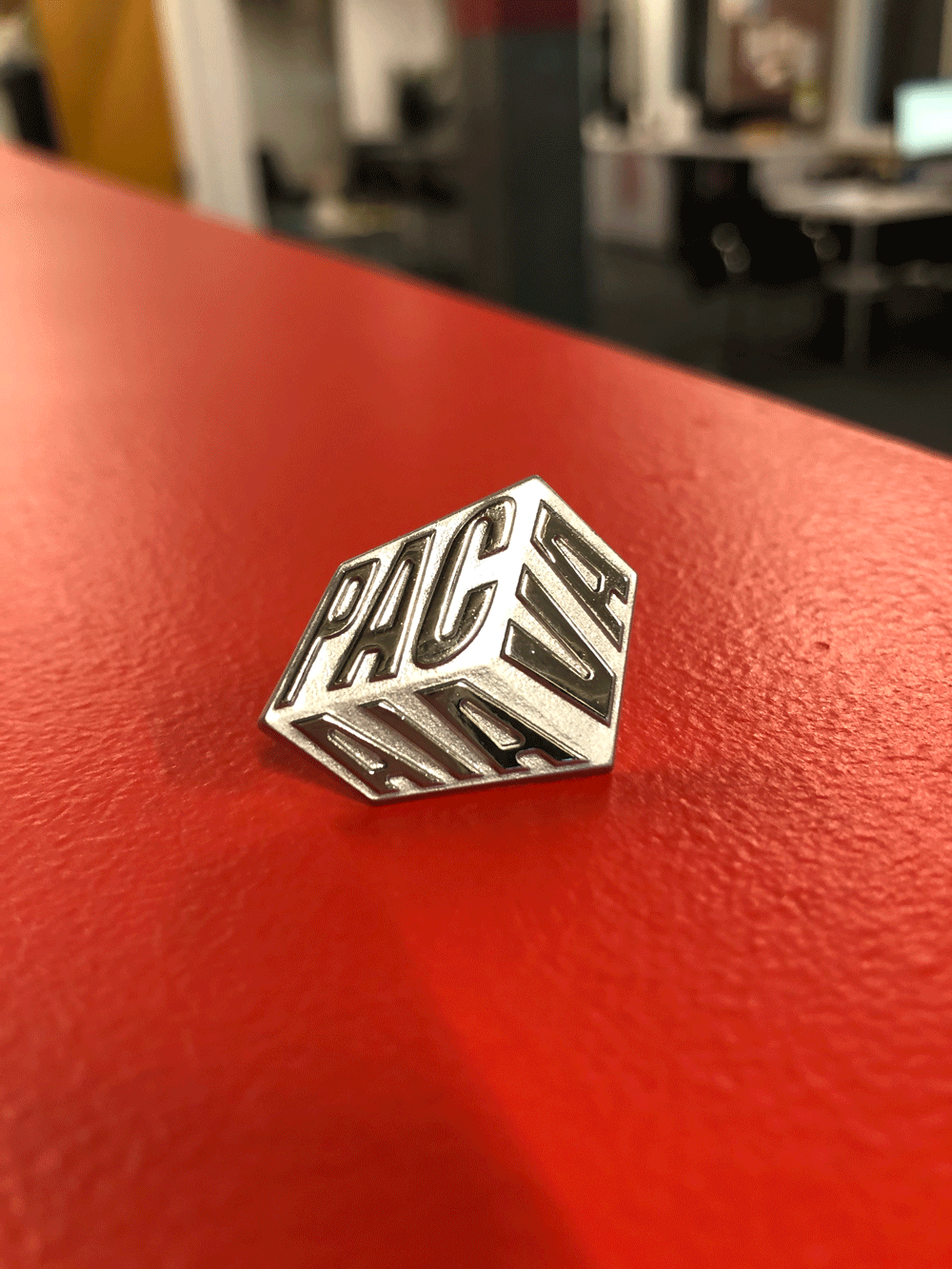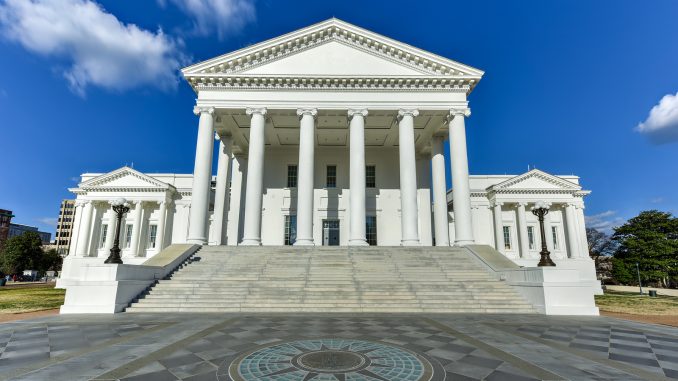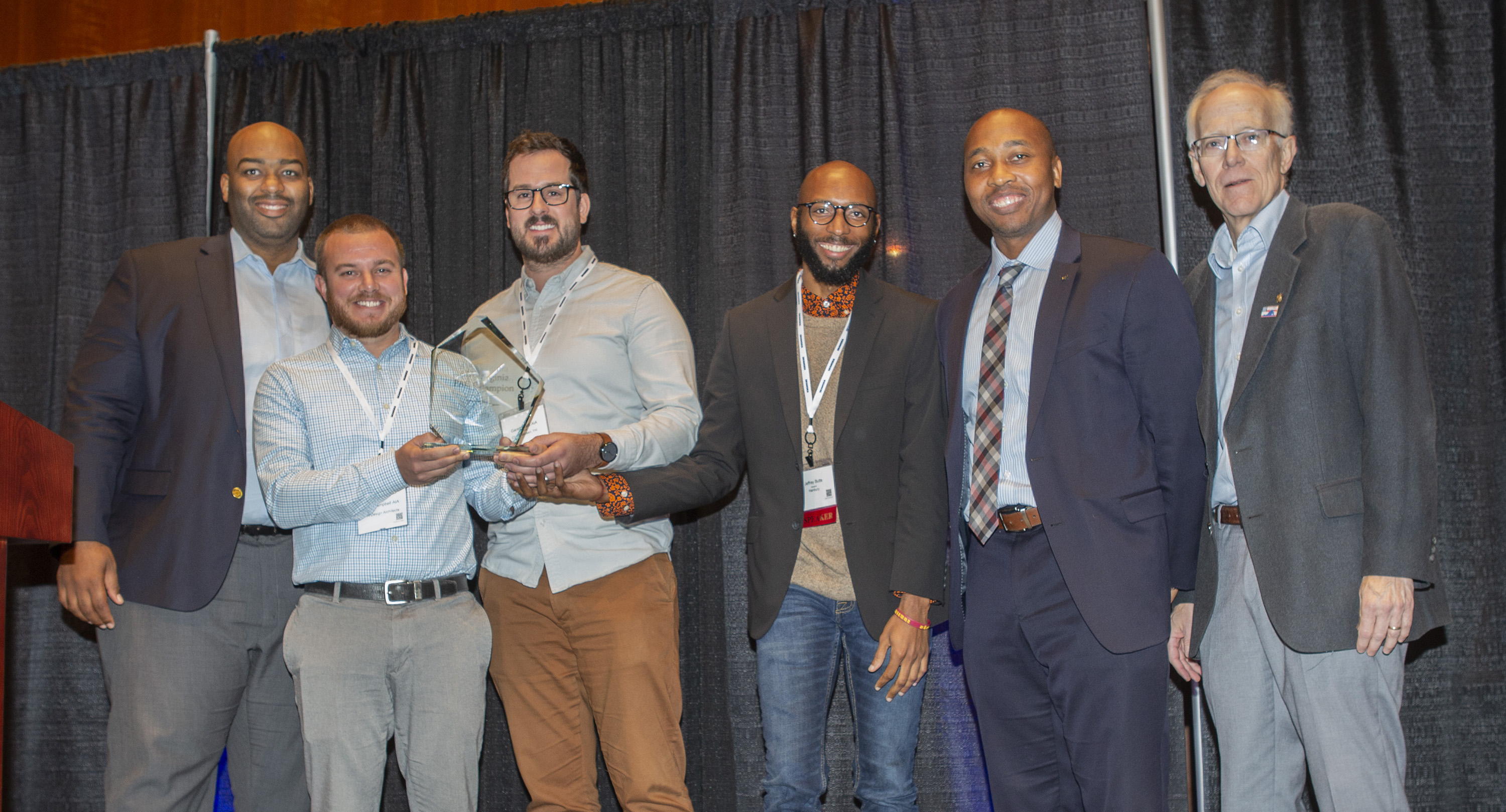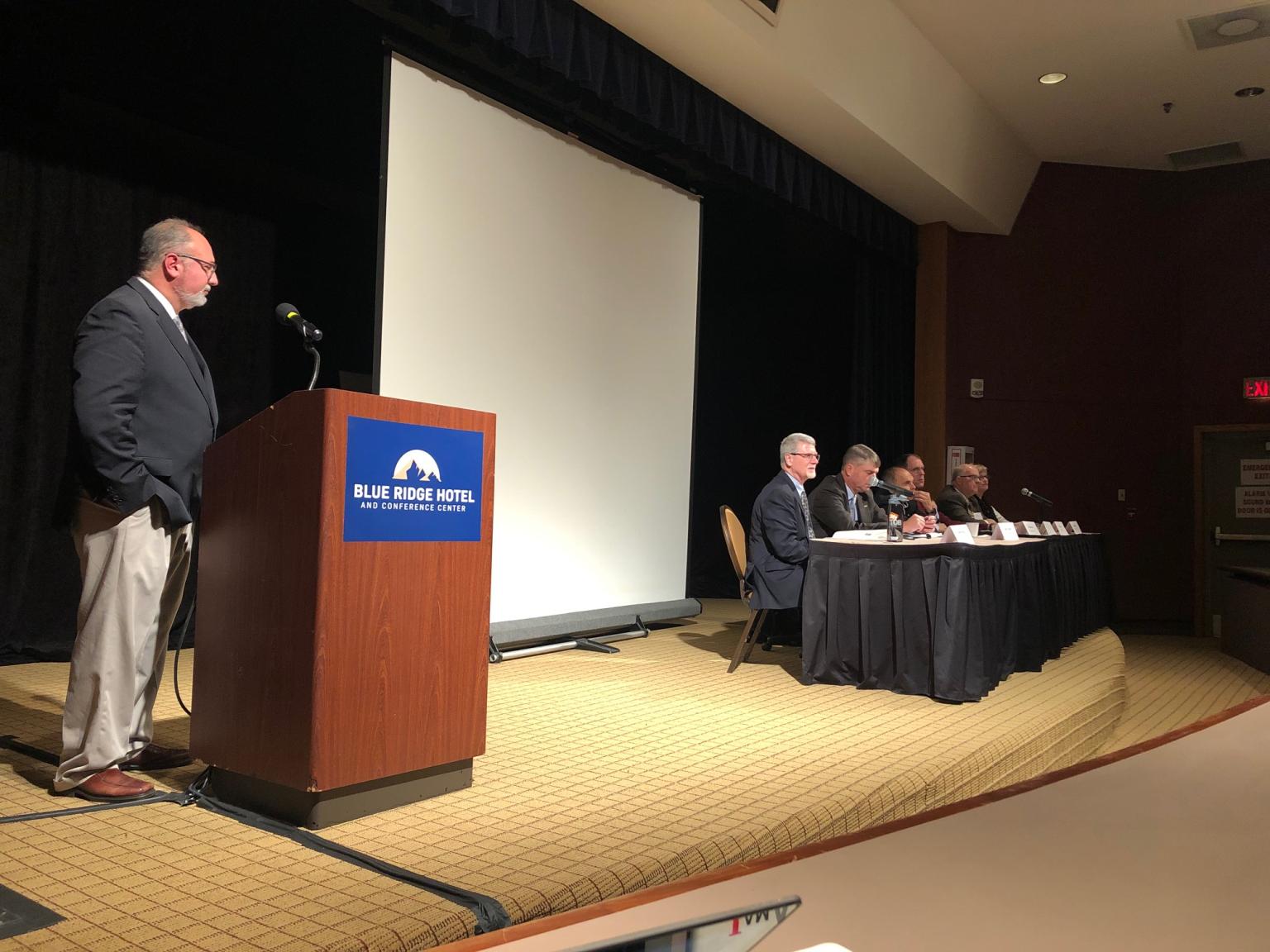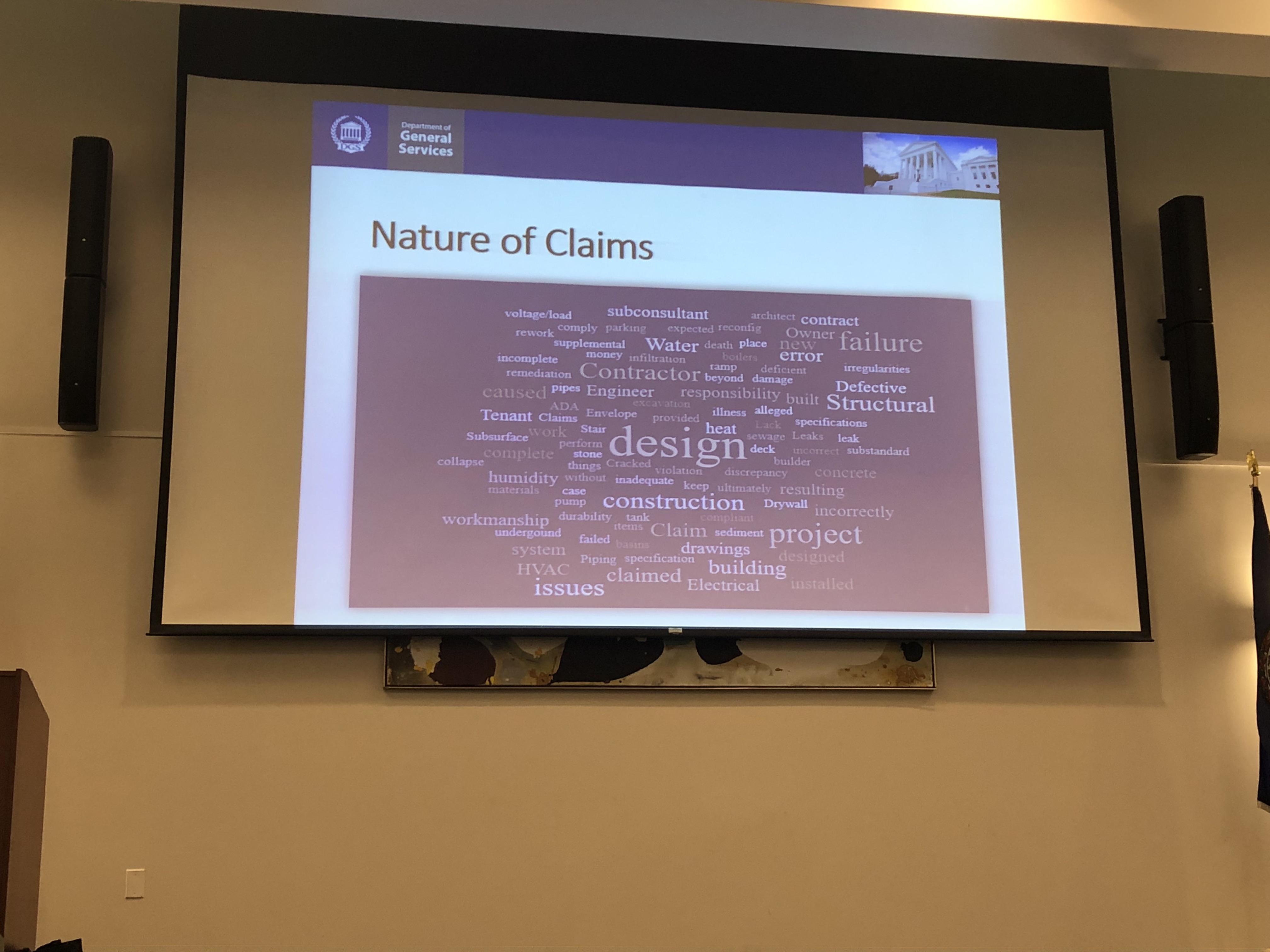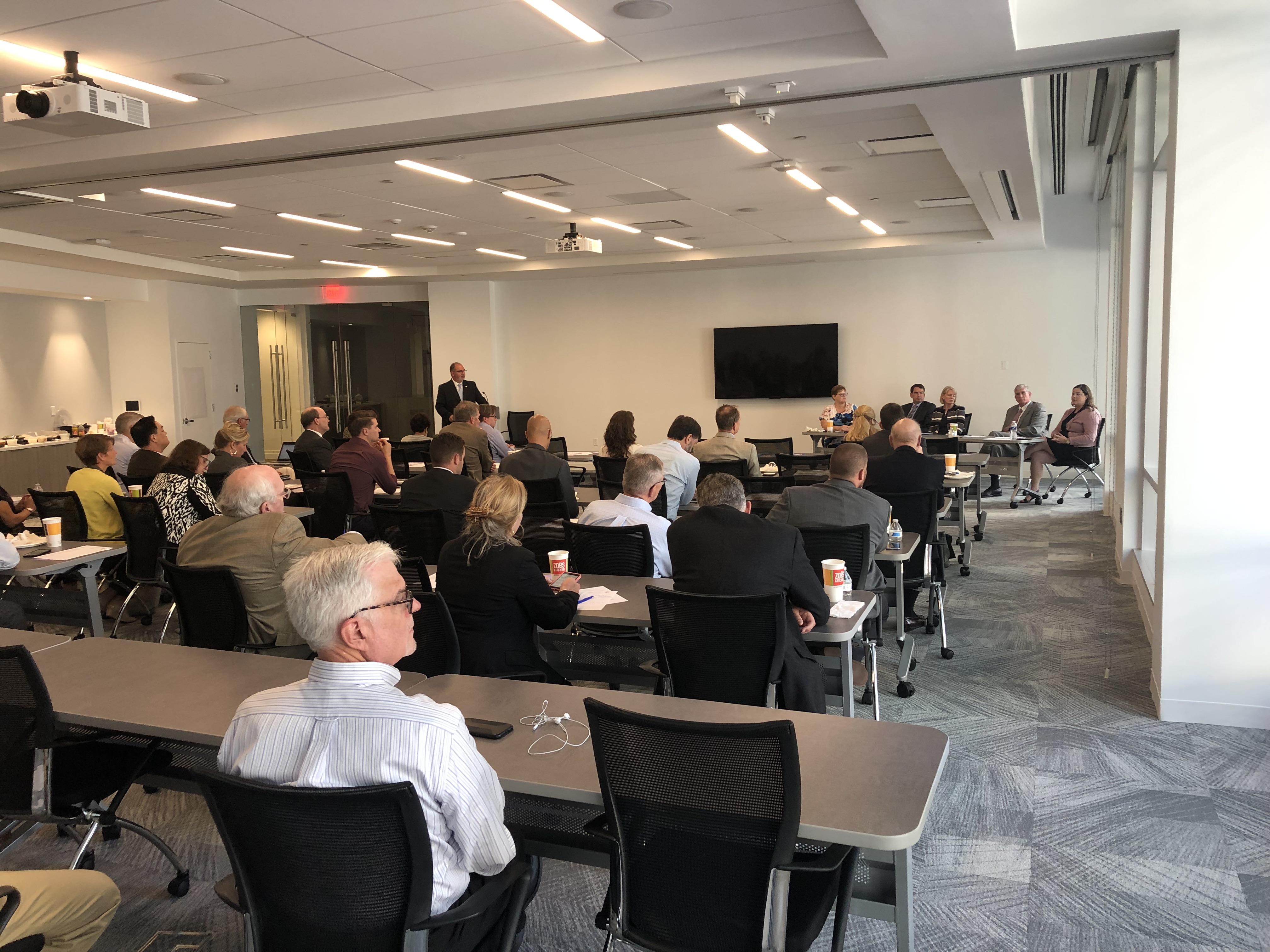Last fall, AIA Virginia’s Government Advocacy Advisory Council and the PAC Board of Trustees engaged the membership in the creation of an updated PAC pin.
Historically, members who invest in AIA Virginia’s Political Action Committee (PAC) have received a lapel pin that can be worn to demonstrate his/her support of our legislative efforts. The existing pin had become dated as it used the organization’s past name of VSAIA (Virginia Society of the American Institute of Architects).
We were pleased to announce at Architecture Exchange East last November that Allison Ewing, AIA, LEED AP, Founder & Partner at Hays + Ewing Design Studio has won this design contest and her pin design is now ready to be worn by AIA Virginia members statewide who give to the AIA Virginia PAC.
Join these donors and support the candidates who understand the architecture profession and receive the new PAC pin.

About Allison
As an architect and leader, Allison Ewing has advanced sustainability through design, implementation, and advocacy – both within and beyond the architectural profession — by modeling change in the building industry with solutions both visionary and practical. Working on commercial, institutional, residential, and mixed-use projects at both large- and small-scale, Allison Ewing’s architectural experience spans twenty-five years and three continents. Ms. Ewing’s work seeks transformation – of site, of workplace, of living environment. She pursues design excellence at all scales, from site to building to detail – an approach which encompasses meeting client’s goals while arriving at elegant solutions that embody sustainable best practices.
Prior to forming her own firm HEDS with partner Chris Hays, Ms. Ewing was Partner at William McDonough + Partners, and design associate at the Italian firm of Renzo Piano Building Workshop. Her work experience also includes the offices of Cesar Pelli & Associates and Mitchell Giurgola Architects.
Ms. Ewing has been a speaker at a number of national and international events related to sustainable design and her work has been published in EcoHome, USA Weekend, Dwell, Custom, and the Washington Post Home. She has received many design awards, including “Custom Home of the Year Award” from Custom Home Magazine. The Lewis & Clark Exploratory Center of Virginia received the top Virginia AIA award in 2018.
Ms. Ewing received her Masters in Architecture from Yale University Graduate School of Architecture. She was the recipient of a Monbusho Fellowship to Japan where she studied Japanese housing.
“Allison Ewing ranks high among the first-generation of architects leading our industry toward sustainability over the past 30 years, and her name, work, voice, and lasting influence in this crucial field stand alongside those of visionary peers like William McDonough, Ed Mazria, Bob Berkebile, and Mary Ann Lazarus.” – Rick Schwolksy, Senior Fellow, Architecture 2030

